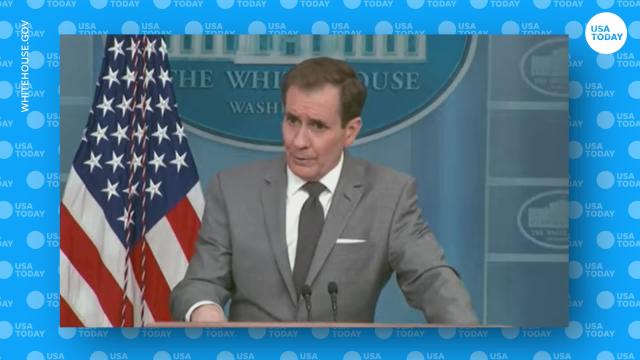US had COVID sequence in 2019, raising questions about who knew what when

Two weeks before a researcher made the genetic sequence of the SARS-CoV-2 virus available to the world, another Chinese scientist quietly posted it to a U.S. government website.
The earlier posting doesn't change the virus' origin story ? whether it was sparked by a live animal market or leaked from a scientific laboratory.
But it does renew questions about how much China knew about the virus and when. It suggests that vaccine development could have started sooner. And it raises new questions about how much the U.S. government knew or should have known about the virus in those early days.
"The belated discovery of the submission underscores the importance of rapid data sharing during outbreaks, since immediate public release of the sequence could have accelerated by several weeks the development COVID-19 vaccines that saved thousands of lives per week in the United States alone," virologist Jesse Bloom, wrote online Wednesday.
Republican Congress members expressed outrage Wednesday when the posting came to light. For more than a year they have been demanding documents showing when the National Institutes of Health first knew about the virus that causes COVID-19.
The Wall Street Journal was the first to report the posting of the sequence on Wednesday, after GOP officials released a statement.
Official timeline
The Chinese government officials claim they first identified a new kind of pneumonia in late December 2019, and they flagged it as being caused by a novel coronavirus on January 7 or 8, 2020. The government has repeatedly said it has been open and transparent about the virus, revealing what it knew as soon as its information was relevant and confirmed.
But the fact that the genetic sequence of the virus was posted to a U.S. website on Dec. 28 contradicts this official timeline, noted Bloom, a virologist at the Fred Hutchinson Cancer Center, who has closely followed the virus' early days.
"The sequence itself does not provide any new insights into the origin or early spread of SARS-CoV-2 in Wuhan," Bloom wrote in his post. "However, the fact that researchers affiliated with the Chinese Academy of Medical Sciences and National Health Commission possessed this sequence no later than Dec-28-2019 contradicts claims by the Chinese government that the cause of the pneumonia outbreak in Wuhan remained unknown through the first week of January 2020."
Where the sequence ended up
According to the records of GenBank, a genetic sequence database operated by the National Center for Biotechnology Information, the then-unknown virus' genetic sequence was submitted by Dr. Lili Ren, a virologist at the Institute of Pathogen Biology, part of the Chinese Academy of Medical Sciences & Peking Union Medical College in Beijing.
Her submission was apparently missing some technical, non-scientific information that GenBank requires, according to a news release put out Wednesday by the Congressional Energy and Commerce Committee. Following submission to GenBank, data are subject to automated and manual processing to ensure integrity and quality and are then made available to the public.
Ren was notified on Dec. 31 that her submission would be deleted within a few weeks without the additional information, but it appears she never responded.
“The submission in question was unable to be verified, despite follow-ups by NIH to the Chinese scientist for more information and a response," a spokesperson with the U.S. Department of Health and Human Services said Wednesday via email.
While officials were waiting for that information, the spokesperson said, another Chinese group submitted a nearly identical sequence with verifiable details on Jan. 12, which "was what was used by NIH scientists and others in their work to understand the origins of COVID-19."
The spokesperson, who declined to be identified by name, said there is still more to be learned about the early days of the pandemic, to better understand how to prevent future ones.
“HHS has consistently and voluntarily provided Congress with thousands of pages of documents, as well as the expertise of officials, as part of its effort to promote transparency and understanding on the origins of COVID-19,” the spokesperson said.
Republicans chasing down information
Republican members of Congress, including Rep. Cathy McMorris Rodgers (R-Washington), have been trying for months to get more information about the virus' origins and what U.S. officials knew when.
"This significant discovery further underscores why we cannot trust any of the so-called ‘facts’ or data provided by the CCP (Chinese Communist Party) and calls into serious question the legitimacy of any scientific theories based on such information," according to the release, signed by members of the Energy and Commerce Committee, including committee chairwoman McMorris Rodgers, along with Brett Guthrie (R-Kentucky) and Morgan Griffith (R-Virginia).
"The American people deserve to know the truth about the origins of SARS-CoV-2, and our investigation has uncovered numerous causes for concern, including how taxpayers’ dollars are spent, how our government’s public health agencies operate, and the need for more oversight into research grants to foreign scientists," the release continues. "In addition to equipping us to better prepare for the next pandemic, this investigation’s findings will help us as policymakers as we work to strengthen America’s biosafety practices and bolster oversight of research grants."
This article originally appeared on USA TODAY: When did China know about COVID? New info suggests earlier date.
Solve the daily Crossword

